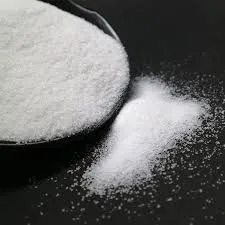The Role of Acrylamide in Water Treatment Mechanisms and Implications
Acrylamide is a chemical compound widely recognized for its industrial applications, particularly in the production of polyacrylamide, which serves as a flocculant in various water treatment processes. With the increasing concerns over water quality and the need for efficient purification techniques, acrylamide has become a focal point in discussions surrounding effective water treatment methodologies. This article delves into the role of acrylamide in water treatment, examining its mechanisms, benefits, and potential hazards.
Understanding Acrylamide
Acrylamide (C3H5NO) is a colorless, odorless crystalline solid that is soluble in water. It is synthesized through the polymerization of acrylonitrile and is mainly used in producing polyacrylamide, a polymer known for its excellent coagulating and flocculating properties. Polyacrylamide is utilized extensively in wastewater treatment to remove suspended solids and organic materials, making it crucial for maintaining water quality.
Mechanisms of Action
The primary mechanism by which acrylamide and its derivatives function in water treatment involves the aggregation of particles. When polyacrylamide is introduced into a wastewater system, it interacts with suspended particles, effectively reducing their electrostatic repulsion. This enables the particles to collide and agglomerate, forming larger flocs that can be easily removed through sedimentation or filtration processes.
Furthermore, polyacrylamide can enhance the settling characteristics of sludge in treatment facilities, improving the efficiency of the sedimentation processes. Additionally, it aids in the removal of heavy metals, organics, and other pollutants, making it a versatile agent in managing complex wastewater compositions.
Benefits of Using Acrylamide
acrylamide water treatment

One of the primary advantages of using acrylamide in water treatment is its effectiveness in low concentrations. Even small amounts of polyacrylamide can significantly improve the clarity of water, making it more aesthetically pleasing and safe for consumption. This is particularly beneficial in treating industrial wastewater, where the concentration of pollutants can be quite high.
Moreover, acrylamide-based products can serve various purposes across different industries. For example, in municipal wastewater treatment, they can help in reducing the volume of sludge produced, which can have significant cost-saving implications for treatment facilities. In agricultural practices, they are often used to improve soil moisture retention and reduce erosion, indirectly contributing to water conservation.
Environmental and Health Concerns
Despite its benefits, the use of acrylamide in water treatment is not without its challenges. Acrylamide is recognized as a potential neurotoxin and a probable human carcinogen, raising concerns about its safety in drinking water supplies. The presence of acrylamide in treated water can pose health risks, especially if the levels exceed regulatory limits.
To mitigate these risks, regulatory agencies around the world, including the U.S. Environmental Protection Agency (EPA), closely monitor acrylamide levels in water systems. There are ongoing discussions regarding the development of safer alternatives to acrylamide-based products that can deliver similar or enhanced performance without the associated health risks.
Conclusion
Acrylamide plays a vital role in enhancing water treatment processes, particularly due to its ability to facilitate the removal of contaminants through aggregation and flocculation. While its effectiveness is unquestionable, the associated health risks and environmental concerns require careful management and regulatory oversight. As research continues, the focus will likely shift toward finding safer alternatives and optimizing the use of acrylamide in water treatment contexts. Both industry professionals and environmentalists must work together to ensure that water treatment practices remain effective while prioritizing public health and environmental safety.
In conclusion, while acrylamide has established itself as an essential tool in the arsenal of water treatment technologies, the balance between effectiveness and safety remains a paramount consideration. Continued innovation and vigilance will be key in navigating the complexities of water purification in the years to come.

